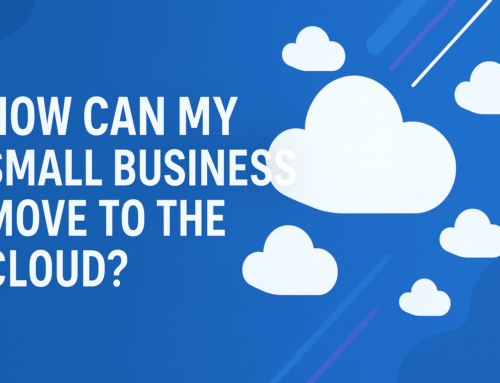Proactive vs. Reactive IT Support: Why the Difference Matters
IT support is essential for keeping your business running, but not all approaches are the same. Some businesses wait until something goes wrong before calling for help – otherwise known as reactive IT support. On the other hand, some take a preventative approach, addressing potential problems before they disrupt operations – this is proactive IT support.
Sometimes it can be difficult to know which approach is best for your business. That’s where we come in! In this article, we will break down the differences between the two approaches, discussing the benefits and drawbacks of each.
Ultimately, a proactive approach is more likely to be the smarter long-term solution for your IT support and we will explain why below.

What Is Reactive IT Support?
Reactive IT support, also known as the break/fix model, is a traditional approach where businesses only look for help after something has gone wrong.
How It Works:
- An issue occurs (e.g., a server crashes, a network goes down, or a cyberattack happens).
- The business contacts their IT provider or in-house team to fix it.
- The issue is resolved, but only after some level of disruption.
Pros of Reactive IT Support:
- No ongoing costs when things are working fine.
- Simple and straightforward. You only pay when you actually need the support.
Cons of Reactive IT Support:
- Unpredictable costs – Emergency fixes can be expensive.
- Downtime and lost productivity – Issues are only addressed after they happen, leading to business disruption.
- Greater security risks – Without proactive monitoring, threats can go undetected until damage is done.
What Is Proactive IT Support?
Proactive IT support takes a preventative approach. Instead of waiting for something to go wrong, IT providers actively monitor, maintain, and optimise systems to prevent problems before they arise.
How It Works:
- Continuous monitoring detects potential issues before they escalate.
- Regular system updates, security patches, and performance improvements keep everything running smoothly.
- IT strategies are aligned with business growth to ensure long-term stability.
Pros of Proactive IT Support:
- Minimised downtime – Issues are prevented before they cause disruptions.
- Predictable costs – Fixed monthly fees make budgeting easier.
- Enhanced security – Regular updates and monitoring reduce cyber threats.
- Improved efficiency – Systems run optimally, leading to higher productivity.
Cons of Proactive IT Support:
- Requires an ongoing investment (but often reduces long-term IT costs).
Why the Difference Matters
Businesses that rely on reactive IT support often experience unexpected costs and frustrating downtime. In contrast, those using proactive IT support benefit from a stable and secure IT environment that keeps operations running smoothly.
It’s like car maintenance, you can wait for your car to break down before you visit your mechanic (reactive) which will cost more and can cause more stress than getting your car serviced regularly (proactive). The same principle applies to IT support for your business.
So, Which Approach Is Right for You?
Choosing between proactive and reactive IT support depends on your business needs, budget, and long-term goals. If your company relies on uninterrupted operations, prioritises security, and wants predictable IT costs, proactive support is the best option. On the other hand, if IT issues are rare and budget constraints are a concern, a reactive approach may seem more appealing, but could lead to unexpected costs and downtime in the long run.
Many businesses find a middle ground by adopting a managed IT service model that balances proactive monitoring with reactive support when needed. If you’re unsure which setup is best for your business, exploring different managed service models can help you decide. Our guide on What Managed Services Model is Best for My Business? breaks down the available options.
FAQs
Can small businesses afford proactive IT support?
Yes! Many managed IT providers, like Techfident, offer scalable and flexible plans tailored to different business sizes and budgets.
Does proactive IT support completely eliminate downtime?
While no system is 100% immune to issues, proactive support significantly reduces the likelihood and duration of downtime.
How do I switch from reactive to proactive IT support?
The transition typically involves an assessment of your current IT infrastructure, implementing monitoring tools, and establishing a long-term IT strategy with a trusted provider like Techfident.
Get in Touch with Techfident
At Techfident, we specialise in proactive IT support to keep your business running without disruption. Our managed IT services include:
- 24/7 system monitoring
- Cybersecurity protection
- Regular maintenance and updates
- Network and infrastructure management
We offer flexible support plans with no long-term contracts, giving businesses the expert IT support they need without unnecessary commitments.
Want to improve your IT strategy? Get in touch via our online contact form or call 0203 4883282 today.




